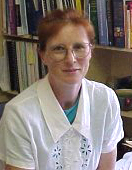Charles Sturt University (CSU) researchers will present a number of projects related to improving the health of communities in regional and remote NSW to a conference of health professionals being held this week in Albury.
With the theme “Many paths to follow”, the NSW Rural and Remote Health Conference 2010 is hosted and sponsored by Charles Sturt University (CSU) for the NSW Institute of Rural Clinical Services and Teaching.
 Conference co-convenor Associate Professor Julia Coyle, who is Head of the School of Community Health based at CSU in Albury-Wodonga, said the conference provides opportunities for vital professional development for health managers and front line staff across most health professions.
Conference co-convenor Associate Professor Julia Coyle, who is Head of the School of Community Health based at CSU in Albury-Wodonga, said the conference provides opportunities for vital professional development for health managers and front line staff across most health professions. “The conference will look at emerging models of care and best practice, new directions for the rural and remote health workforce, opportunities to improve Indigenous health and initiatives to make NSW rural and remote communities healthier,” Professor Coyle said.
The conference will include workshops to be held before and after the main conference, on such topics as wound management, treating and managing sports injury, respiratory/occupational lung disease, embracing change and women’s health.
Conference dates: Thursday 4 to Friday 5 NovemberVenue: Albury Entertainment Centre, Swift St, Albury, NSW.
CSU speakers attending the conference include:
- Associate Professor Ann Bonner, School of Nursing, Midwifery and Indigenous Health, CSU in Wagga Wagga, on having rehabilitation at home in regional NSW. “Individuals often need rehabilitation after injury, chronic illness, surgery or due to the ageing process. Traditionally rehabilitation programs are based in hospital and augmented by outreach services to people’s homes. However, this out-dated thinking focuses on repairing bodies rather than focusing on integrating the person back into their community. Traditional rehabilitation is not suitable for most rural and remote communities due to the difficulties associated with low patient numbers, large distances and health workforce shortages. We suggest a model called ‘community coalitions’ that pulls together the abilities, expertise and resources of many health and other professionals, government and non-government organisations which are locally available. The coalition works together to facilitate wellbeing and social inclusion for people with physical limitations.”
- Associate Professor Rod Pope, director of the Centre for Inland Health, CSU in Wagga Wagga, on building resilience in small rural communities. “The North East Riverina Rural Counselling Service (NERRCS) was funded by the Australian Government to build the resilience of 19 small rural communities, with support from a CSU research team. We developed a practical approach to building community resilience, or ‘successful adaptation to stressful circumstances’. Using this approach, NERRCS helped the communities identify existing community assets that could be used to make these communities more resilient. These assets included social assets like sporting clubs, service assets like hospitals, and economic assets like available jobs. Then NERRCS assisted the communities to plan actions that would use these assets to make them more resilient. NERRCS and the CSU research team recorded these community discussions and evaluated the results, providing feedback to the communities to further help them build their resilience. The results showed that regional service providers from various sectors contributed to community resilience. Local 'champions’ were important for resilient community action, while social networks enabled mutual support and sharing of skills and knowledge within each community.”
- Associate Professor Julia Coyle, School of Community Health, CSU in Albury-Wodonga, on retaining allied health professions in regional Australia. “Recruiting and retaining rural health practitioners including allied health professionals is a concern for the Australian health care system. One key factor for these professionals relates to their capacity to take leave to undertake professional development. CSU has been sponsored by the NSW health department to undertake research related to this in partnership with three rural area health services in NSW. Early findings from this research into models of locum support for allied health professionals such as occupational therapists, physiotherapists and speech pathologists will be presented at the conference. In addition, recommendations for the future operation of locum schemes will be provided.”
A presentation will also be made on behalf of:
- Professor Patrick Ball, School of Biomedical Sciences, CSU in Wagga Wagga, on perceptions of alcohol use by farm workers in regional NSW. “Workplaces with high job insecurity, high stress, long and irregular hours and geographic isolation have supported a culture of alcohol use in Australia’s farming industry. High alcohol use is common in Australia and risks associated with alcohol use, other than driving while intoxicated, are not well known. Research into substance misuse identifies strong relationships between the use of drugs and alcohol and mental health problems, physical injury, reduced workplace productivity, accidents, drink-driving and violence. Workplace culture is critical in shaping drinking behaviour, with smoke breaks and after work drinks commonly relied on for team building, camaraderie and relaxation. I present some early work investigating farm workers’ use of drugs and alcohol, their knowledge of the health and wellbeing impacts and the role of the workplace in supporting or encouraging use, and implications for health services.”





Social
Explore the world of social